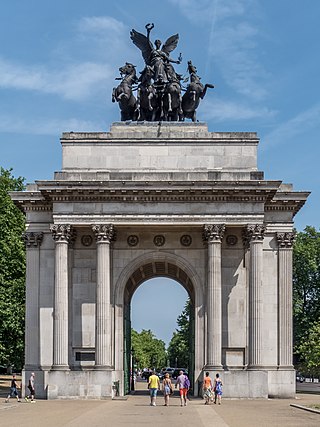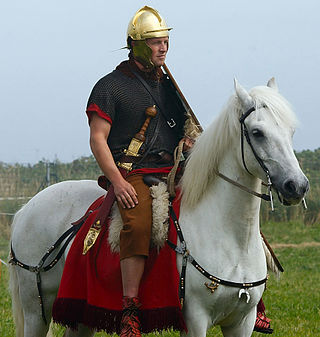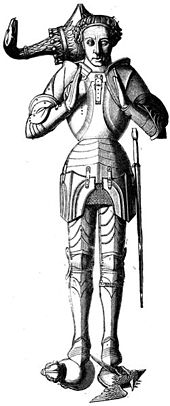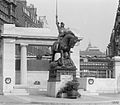
Hyde Park is a 350-acre (140 ha), historic Grade I-listed urban park in Westminster, Greater London. A Royal Park, it is the largest of the parks and green spaces that form a chain from Kensington Palace through Kensington Gardens and Hyde Park, via Hyde Park Corner and Green Park, past Buckingham Palace to St James's Park. Hyde Park is divided by the Serpentine and the Long Water lakes.

Kensington Gardens, once the private gardens of Kensington Palace, are among the Royal Parks of London. The gardens are shared by the City of Westminster and the Royal Borough of Kensington and Chelsea and sit immediately to the west of Hyde Park, in western central London known as the West End. The gardens cover an area of 107 hectares. The open spaces of Kensington Gardens, Hyde Park, Green Park, and St. James's Park together form an almost continuous "green lung" in the heart of London. Kensington Gardens are Grade I listed on the Register of Historic Parks and Gardens.

The Marble Arch is a 19th-century white marble-faced triumphal arch in London, England. The structure was designed by John Nash in 1827 as the state entrance to the cour d'honneur of Buckingham Palace; it stood near the site of what is today the three-bayed, central projection of the palace containing the well-known balcony. In 1851, on the initiative of architect and urban planner Decimus Burton, a one-time pupil of John Nash, the arch was relocated to its current site, near the northeast corner of Hyde Park, so that expansion of Buckingham Palace could proceed.

Hyde Park Corner is between Knightsbridge, Belgravia and Mayfair in London, England. It primarily refers to a major road junction at the southeastern corner of Hyde Park, that was originally planned by architect Decimus Burton. The junction includes a broad green-space roundabout in its centre, which is now the setting for Burton's triumphal Wellington Arch.

The Wellington Arch, also known as the Constitution Arch or (originally) as the Green Park Arch, is a Grade I-listed triumphal arch by Decimus Burton that forms a centrepiece of Hyde Park Corner in central London, between the corner where Hyde Park meets Green Park. The Arch stands on a large green-space traffic island with crossings for pedestrian access. From its construction (1826–1830) the arch stood in a nearby location, slightly to the east, directly across from Burton's Ionic screen entrance to Hyde Park; it was moved a short distance to its current site at the top of the Constitution Hill road in 1882–1883. The triumphal arch originally supported a colossal equestrian statue of the 1st Duke of Wellington by the sculptor Matthew Cotes Wyatt, acquiring its name as a result. Peace descending on the Quadriga of War by sculptor Adrian Jones, a bronze of the Goddess of Victory Nike riding a quadriga, has surmounted the arch since 1912.

Alfred Adrian Jones was an English sculptor and painter who specialized in depicting animals, particularly horses. Before becoming a full-time artist he was an army veterinary surgeon for twenty-three years. On retirement from the British Army, Jones established himself as an artist with a studio in London. He became a regular exhibitor at the Royal Academy and in commercial galleries from 1884 onwards. His training as a veterinary surgeon gave him a deep knowledge of equine anatomy which he used in his work to great effect. He created the sculpture Peace descending on the Quadriga of War, on top of the Wellington Arch at Hyde Park Corner in London. Following both the Boer War and World War I, Jones created a number of notable war memorials including the Royal Marines Memorial and the Cavalry of the Empire Memorial, both in central London. Alongside the public monuments he created, Jones made equestrian and equine statuettes and portrait busts. Whilst well known as a sculptor, Jones was also an accomplished painter.

The Polish Air Force Memorial is a war memorial in West London, England in memory of airmen from Poland who served in the Royal Air Force as part of the Polish contribution to World War II. Over 18,000 men and women served in the Polish squadrons of the RAF during the war, and over 2,000 died. The memorial marks the southern extremity of South Ruislip in the London Borough of Hillingdon, near RAF Northolt, where seven Polish-manned fighter squadrons were based at different times in the war.

Peel Park is a 22.6-hectare (56-acre) urban public park in the Bolton and Undercliffe area of Bradford, England, located about 0.75 miles (1.2 km) north-east of the city centre, and named after Sir Robert Peel (1788–1850). Peel Park was Bradford's first public park and is on the English Heritage and National Register of Historic Parks and Gardens online databases. The park is a Green Flag Award winner and has been for a number of years.

Roman cavalry refers to the horse-mounted forces of the Roman army throughout the regal, republican, and imperial eras.

The Wellington Monument is a statue representing Achilles erected as a memorial to Arthur Wellesley, 1st Duke of Wellington, and his victories in the Peninsular War and the latter stages of the Napoleonic Wars. It is sited at the south-western end of Park Lane in London, and was inaugurated on 18 June 1822. Its total height, including the sculpture, base and the mound on which it stands, is 36 ft.

Macclesfield Cenotaph is a World War I memorial in Park Green, Macclesfield, Cheshire, England. It was unveiled in 1921, and consists of a stone pillar and pedestal and three bronze statues. One statue is that of a mourning female, and the others comprise Britannia laying a wreath over a soldier who had died from gassing, an unusual subject for a war memorial at the time. The memorial is recorded in the National Heritage List for England as a designated Grade II* listed building.

A Memorial to Queen Victoria stands in Woodhouse Moor, Leeds, West Yorkshire, England.

The Guards Memorial, also known as the Guards Division War Memorial, is an outdoor war memorial located on the west side of Horse Guards Road, opposite Horse Guards Parade in London, United Kingdom. It commemorates the war dead from the Guards Division and related units during the First World War, and of the Household Division in the Second World War and other conflicts since 1918.

The statue of the Earl Kitchener is an outdoor bronze statue by John Tweed depicting Herbert Kitchener, 1st Earl Kitchener, installed in 1926 and located on the south side of Horse Guards Parade in London, United Kingdom. The sculpture stands on a Portland stone plinth. It became a Grade II listed building in 1970.

An equestrian statue of Arthur Wellesley, 1st Duke of Wellington, stands on the north side of Hyde Park Corner, London. The open space in which it stands, now the centre of a large roundabout, was once called Wellington Place.

The North Borneo War Monument is a monument that was erected on 8 May 1923 by the North Borneo Chartered Company in Bond Street, Jesselton, British North Borneo. Originally, it was a memorial for the fallen British soldiers in World War I but later extended to include the Australian soldiers in World War II. The monument stands today in the city park of Kota Kinabalu, the capital of the Malaysian state of Sabah.

The Thames Ditton Foundry was a foundry in Thames Ditton, Surrey, which operated from 1874 to 1939 and which under various owners produced numerous major statues and monuments as one of the United Kingdom's leading firms of bronze founders.

The Royal Artillery Boer War Memorial is located on the south side of The Mall in Central London, close to the junction with Horse Guards Road at the northeast corner of St James's Park. Unveiled in 1910, it marks the deaths of the 1,083 soldiers of the Royal Artillery who died in the Second Boer War from 1899 to 1902 It has been a listed building since 1970.

Folkestone War Memorial is a First World War memorial situated in The Leas area of Folkestone, Kent. Designed by Ferdinand Victor Blundstone and unveiled in 1922, it commemorates the 578 men of Folkestone who served in the war, and those who passed through Folkestone Harbour when Folkestone Harbour railway station nearby was an important point of departure and return for passage to the Western Front via Boulogne. The road from the station to the harbour was renamed the "Road of Remembrance" after the war.
























